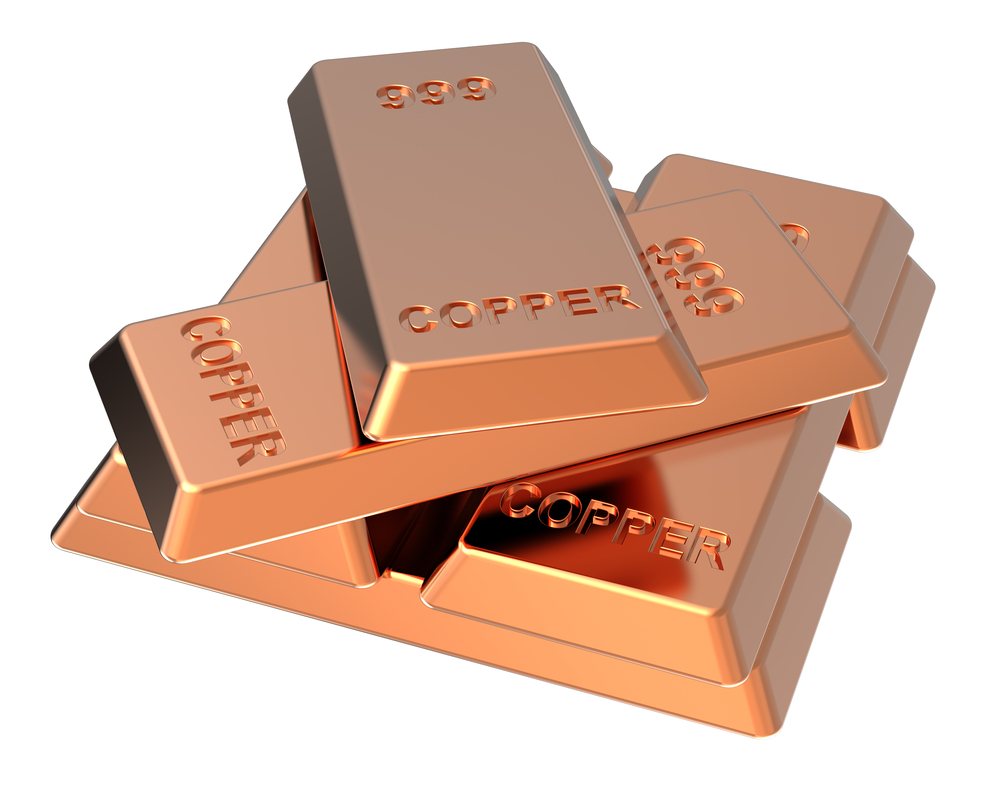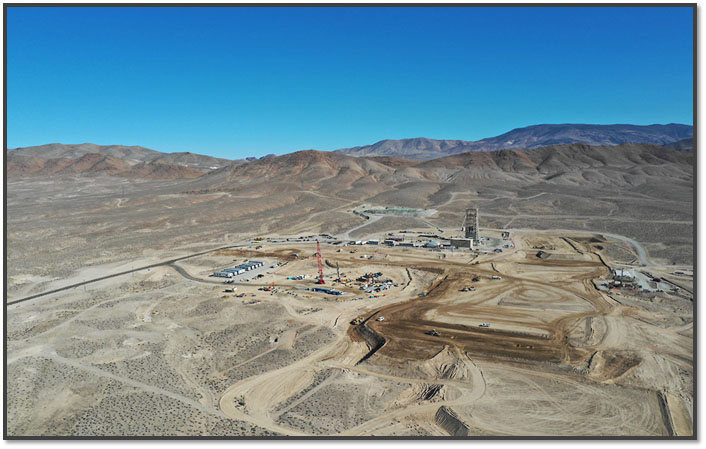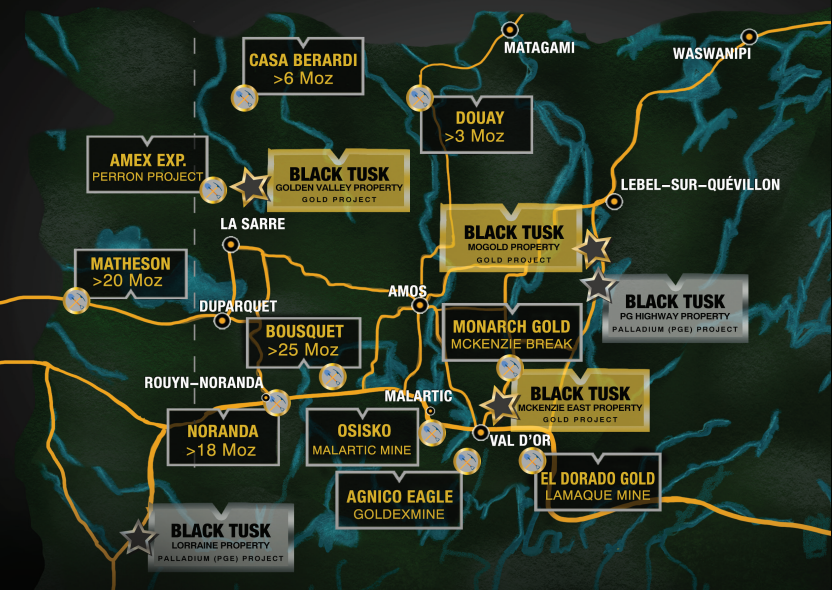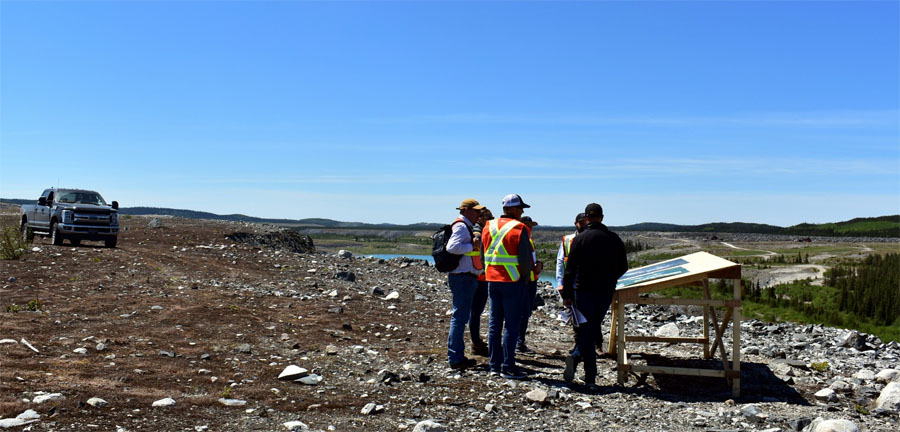The Metals Report: Describe the typical relationship between a graphite producer and a graphite buyer.
Benoit Gascon: Graphite is an additive used in a myriad of products. Therefore, the graphite producer needs to have a close and continuous relationship with the customer in order to understand its current and future needs. Producers have to essentially partner with the buyers. They not only need to know the specific properties of the graphite needed, but also the logistics in getting the material to the buyers in a timely manner. Every producer-buyer relationship is unique.
TMR: Doesn't that limit the ability of junior graphite companies to create offtake agreements with buyers? If buyers are looking for something very specific and very consistent and junior companies have never produced anything, then is it too much of a risk for the companies to take?
BG: Yes, most firms won't take the risk. Traditional offtake agreements do not work in the industrial minerals in general and in the flake graphite sector specifically. [Editor's note: offtake agreements are typically formed prior to the construction of a mine or other facility to secure future production.] I've been in that business of producing and selling graphite for over 20 years; I never had one offtake partnership in place. Revenues will come when a company is already in production, has found customers and agreed with them on the specifications, pricing and logistics.
TMR: What should potential investors in the graphite space be watching for when evaluating a company's business plan?
BG: A company's business plan should focus on the traditional market that exists today. Traditional applications include refractories, carbon raisers, foils, thermal management, friction, lubricants, processors and, with additional processing, batteries, powder metallurgy, pencils, packaging and more. What they need to look at is time to money ratio in terms of when and where it will sell its graphite. Companies need to know specifically how many tons will be sold for a specific application. There has to be an understanding of the end-users and their particular needs.
TMR: The business is a lot more than mining, is that what you're saying?
BG: Yes—mining is the easy part. You have the market on the other end, where you're given a specification that you have to meet if you want to sell your graphite. Firms have to adapt their ore processing to make sure they can meet the customer requirements. It's not ore to market; it's market to ore. It's an inverted model.
TMR: How can a new graphite mining company break into the market?
BG: New companies will have to learn about the end-users/buyers. Companies will need to meet with buyers and show that they know exactly what the customer wants, what the needs are in terms of specifications and grade, and they must demonstrate sound logistics and a valuable deposit that will enable a close, reliable long-term relationship. At the same time, companies need to know what their competitors are doing in the graphite space so they can make potential customers a better offer.
TMR: What are some ways graphite producers can boost their profit margins?
BG: Again, I cannot stress enough the ongoing relationship with your customers. Firms need to tailor-make product for their customers. Chinese graphite producers do not have very close connections with North American end-users or European end-users, so that is an opening where North American companies can build a competitive advantage. That's what we did at my company, Stratin Graphite, in the 1990s. We evolved into a customer-oriented operation from top to bottom. That means selecting management with the right mindset, introducing flexibility in the production process and, as always, understanding the markets/industries of your customers and adapting to meet their requirements. The customer is king.
TMR: What's the biggest cost in jurisdictions like Québec? Is it labor, given the skill level required to meet very specific customer needs?
BG: Even though the business is not overly labor intensive, labor still is a high cost. You do need to find the right people, such as metallurgists and engineers, with a customer-oriented approach. Production personnel also need to be ready and to switch production campaign patterns because you have to be flexible to succeed in the natural graphite space.
TMR: Is it difficult to find those people these days?
BG: Yes, it is difficult because there are not a lot of people with this type of experience. Attracting them is not only a matter of writing a big check. Companies have to also offer them the opportunity to do something innovative and exciting in a new environment.
TMR: As an investor, what should I be most concerned about when I start to look into a junior graphite company?
BG: Grade is certainly one important long-term factor because the higher the grade in the ore, the lower production cost will be because a plant won't need to process as much ore to meet its production targets. The plant itself, given a high-grade ore body, could be smaller and cheaper. Production costs are especially important because companies need to weather the up and down cycles of the global economy.
The second factor is, as we discussed previously, management. Management needs to have experience dealing with graphite buyers first and foremost. They need to show that they understand the market, who the end-users are, what they need, what they're using today and where they're going. Customers need to be up there on the front stage and everything has to be aligned in order that producers meet their exact needs.
TMR: How much does the jurisdiction matter? Does, for instance, Québec—the graphite producing hub of North America—offer a better chance of success than other places in North America?
BG: Québec has very good history of graphite production since 1990 with high-grade deposits that carry a high proportion of large flakes. A lot of experienced professionals live there too. Québec is also close to the large U.S. market, so logistics are great, with the Port of Montreal offering shipping to anywhere in the world. Being close to end-users is the first step in building a close and continuous relationship, and there are also transportation costs to consider.
TMR: One of the topics that comes up when graphite is discussed is graphene. That's a single layer of graphite that is used in high-tech applications. So far, graphene has only been manufactured on a commercial level using synthetic graphite, which is made using petroleum coke or a petroleum byproduct. Do you believe graphene will ever be commercially produced using mined graphite?
BG: It's possible to produce graphene with natural flake graphite. But right now, the manufacturing process is still not commercially viable. That will happen eventually, but right now it is in the very early stages. It will take a lot of time before there is meaningful volume of graphene produced from natural flake graphite, but it could eventually be an attractive business that will have a material impact on bottom lines, the driving factors being increased volume and demand from new applications.
TMR: So if a company is now touting graphene as a revenue stream, it's something of a red flag.
BG: Absolutely. We go back to the basics: time to money, time to market. Is there a market today? You'll have to base your business on the market that actually exists today, not on some dream about a future market.
TMR: Are there too many graphite companies competing right now?
BG: Absolutely; not all of them can be put into production. If 75% of the gold juniors are successful in finding a deposit that is economically viable, they can go into production because their gold will be sold at whatever the market price is. This isn't the case at all in the graphite space. Even ten producers within the next two years would be too many, because the market will not be able to absorb that much added production right away.
TMR: Where are we in the graphite cycle?
BG: From 1990 to the beginning of the 2000s, the only thing we saw was increased competition from China and declining prices year over year. But while the Chinese had the production, they had virtually no internal demand. These conditions led to the shutdown of all the operations elsewhere that tried to start in the 1990s, except the one in Québec I was running.
But beginning in 2000, internal demand in China started to increase. Ever since, thanks to China's rapid economic growth, graphite demand has continued to increase every year. India's growth has also been a major factor.
The dynamics of the market really changed in 2008–2009. Prices increased significantly and have remained high, though they did decrease a bit this past year because of the state of the global economy.
The key point is that there is a continuing imbalance between supply and demand worldwide. That's kept prices from retreating back to those lower levels. My feeling is that prices will never go back to that level. That is due not only to demand from traditional applications, but also new applications for graphite coming online in the next 5–10 years.
So, to summarize, we bottomed up, increased a bit, and now I would say we have plateaued over the past year. But demand will continue to grow 2013, 2014, 2015 and beyond.
TMR: What's to keep the industry from replaying the 1990s again?
BG: The market dynamics are completely different from the nineties. Again, the internal demand in China that was not there in the nineties is there today. In the nineties, the Chinese were selling their minerals and then buying the magnesia carbon bricks, the steel, all those value-added products. Today, China is producing its own steel and will continue to do so.
China was also not producing cars in the nineties. Now it's the largest car market in the world. You need graphite for carbon brush in a car, for brake pads and for clutch facings, to name a few applications. China is also producing a lot of electronics, which need graphite for anti-static packaging material.
Don't forget: India is coming onstream too. India will grow as China has. Globally, the market for graphite is growing. Looking at the supply side, over the past twenty some years there was only one addition to supplies outside of China. The only supply source that survived the 90s is Stratmin Graphite. [Editor's note: Stratmin was acquired by Imerys (NK:PA) in 1996.] All the others shut down except for one in Brazil that mainly supplied the country's domestic market, which experienced strong growth over the past years. The bottom line is that you have increased demand worldwide particularly in China, meaning they have less graphite to export to buyers around the globe. There is room for additional supply—the market will dictate how much. Those companies with the right relationships will have the clear advantage.
TMR: How sensitive are graphite prices to global economic growth?
BG: It depends on the application. Steel demand is closely linked to economic growth, so in a slow economy, steel manufacturers need less graphite. But on a smaller scale, demand heavily depends on the agreement that a company has with its customer. One-year agreements are standard, so a company can enjoy some stability depending where it is between its contract renewal dates. But if that customer needs less graphite, the company will then need to find a new buyer for that excess supply.
TMR: Do you have any words of wisdom for anybody looking to invest some money into this sector?
BG: Do your homework. Be selective. Don't look at it like it's the usual mining or junior mining company. The market is quite different. You need to understand the market. You need to be close to it so look at management, grades. Grade is key because of the long-term potential of being a low-cost producer.
TMR: Can investors make money in this sector?
BG: I believe so. If you would have asked me the same question 10 years ago, I would have said no, because the industry was close to rock bottom. It was very difficult—but it is still a difficult industry.
Benoit Gascon of Mason Graphite Inc. has over 20 years of experience in the graphite and carbon industries. He was the CEO of Stratmin Graphite, which operates the Lac-des-Iles deposit, one of North America's only producing graphite mines. Gascon was responsible for the complete takeover of Stratmin Graphite by Imerys SA, a world leader in industrial minerals, to form Timcal Graphite and Carbon.
Want to read more Metals Report interviews like this? Sign up for our free e-newsletter, and you'll learn when new articles have been published. To see a list of recent interviews with industry analysts and commentators, visit our Metals Report homepage.
DISCLOSURE:
1) Brian Sylvester of The Metals Report conducted this interview. He personally and/or his family own shares of the following companies mentioned in this interview: None.
2) The following companies mentioned in the interview are sponsors of The Metals Report: None. Interviews are edited for clarity.
3) BG: I personally and/or my family own shares of the following companies mentioned in this interview: Mason Graphite Inc. I personally and/or my family am paid by the following companies mentioned in this interview: Mason Graphite Inc. I was not paid by Streetwise Reports for participating in this interview.



























































